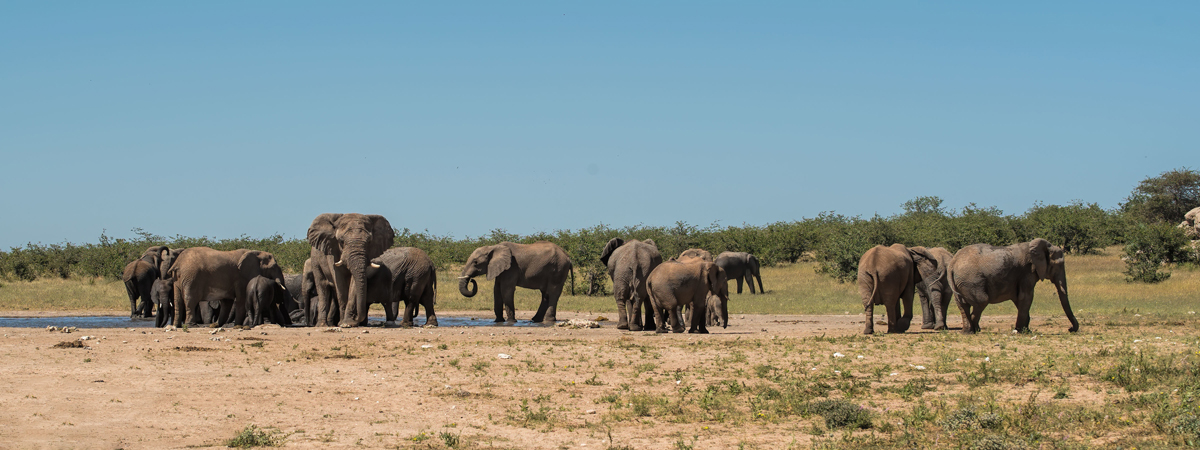Like many wildlife photographers, when I travel I find that my camera bag usually weighs more than my check in luggage. This is largely due to the need to carry long lenses.
I try to keep up to date with the lenses that are available for my camera and when I get back from safari – if I haven’t had a chance to try them in the field – I often find myself checking up the reviews of lenses my fellow travellers have been using to see whether I can improve on the combination I travel with.
Nikon 400mm f2.8 AF-S E FL ED VR Lens
Nikon have recently launched a re-vamped version of their 400mm telephoto lens (Nikon 400mm f2.8 AF-S E FL ED VR) and when it appeared as the topic of discussion on a forum I participate in, I was keen to find out what others thought of it. At the moment I use a 300mm lens plus a 1.4xTC, which gives me a focal length of 420mm.
The previous Nikon 400mm telephoto was a great lens, but big and heavy and starting to show its age – especially in the autofocus department.
The new lens sounded great. It is much lighter and has a much more responsive autofocus. BUT, it comes with a whopping £10,000 price tag. That’s double the price of the Nikon 500mm f/4 ED VR AF-S Nikkor Lens and 50% more expensive than the Nikon 600mm f4 ED VR AF-S Nikkor Lens.
As the discussion evolved, various photographers put forward their opinions on the best combination of lenses to carry on a wildlife safari; covering focal lengths from 200mm to 600mm and how the judicious use of teleconverters could widen the available range of focal lengths. It was very interesting to learn what someof my favourite wildlife photographers thought of the lenses available to them.
One of the most useful things to come out of the discussion however, was this link. Nikon 400mm f/2.8G VR Review.
This is much more than just a normal review. What the excellent folks at photographylife.com have done is to compare Nikon’s new 400mm f2.8 lens with just about every other telephoto in the Nikon range. You can see, for example, how the 400mm telephoto compares with the 200mm telephoto + a 2x TC; how it compares with the 300mm lens + a 1.4x TC (420mm); and so on.
What this does is enable you to look at your overall requirements and work out which combination of lenses and teleconverters will give you the best bang for your buck.
Zoom vs Telephoto
Although some of the so-called super zoom lenses from third party manufacturers like Sigma and Tamron look enticing – and the thought of being able to take just one long (and heavy) lens on safari really appeals – in-depth reviews almost always reveal that the trade off for such a great focal range at such a resonable price is a compromise on quality. That’s not to say that lenses like the Tamron 150-600mm f5-6.3 SP Di VC USD lens or the Sigma 150-500mm f/5-6.3 DG OS HSM are poor lenses; but they simply cannot match the quality of a Nikon or Canon prime telephoto lens.
The problem is, that although they are excellent, the Nikon and Canon telephoto lenses are expensive. Just one of them will cost many times more than a Sigma or Tamron super zoom.
The high cost of good prime lenses
To cover the focal range of the Tamron 150-600mm f5-6.3 SP Di VC USD (which costs about £950) by using a selection of Nikon telephoto lenses would cost around £31,000. (200mm f2 G ED AF-S Nikkor VR II – £4,099, 300mm f2.8 G ED VR II AF-S Nikkor – £4,029, 400mm f2.8 AF-S E FL ED VR – £10,399, 500mm f/4 ED VR AF-S Nikkor – £5,849, 600mm f4 ED VR AF-S Nikkor – £7,069).
OK, that’s without using teleconverters.
You could achieve a similar range of focal lengths by selecting just the 200mm and the 500mm and adding a 1.4xTC a 1.7xTC and a 2x TC; which would bring the cost down to around £10,900. It’s still a lot of money.
I know several photographers who happily use Sigma zoom lenses. The results are absolutely fine for their needs.
For me though, although the appeal of taking one big zoom is great, I really do not want to compromise on quality. I’d rather carry a shorter lens that is capable of sharper images and crop where necessary which means I’ve got to keep saving.
dxomark.com – Matching lenses to camera bodies
If you are looking for a new lens, another site well worth visiting is dxomark.com. What dxomark does is to test lenses with specific camera bodies.
You may be surprised to discover that the same lensa can perform differently with different bodies. I was.

